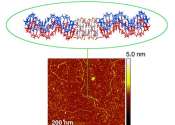Nonflammable electrolyte for high-performance potassium batteries
Australian scientists have developed a nonflammable electrolyte for potassium and potassium-ion batteries, for applications in next-generation energy-storage systems beyond lithium technology. In the journal Angewandte Chemie, ...







